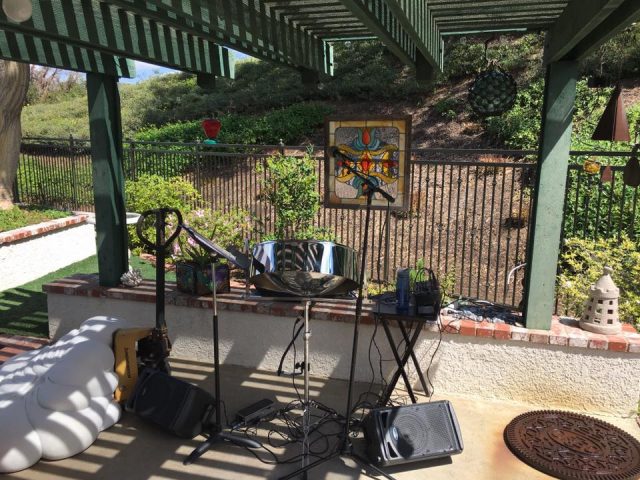Here are some top tips for protecting your music equipment during a gig.
Let’s face it, being a professional musician is expensive. Unless you’re working constantly, spending so much on instruments, a PA system, cables and stands is costly. If you’re not careful, it can eat into your profits enough to shatter your bottom line.
To keep your business in the black and avoid turning your dream gig into a nightmare, here are some ways to protect your music gear before, during and after a gig.
Storage
Once you’ve gotten all the gear you need for a gig (which for steelpan players would include your pan, a P.A. system, cables, bags, tables and stands), you’ll need to choose a place to store it all that’s safe from theft, weather and other hazards. If you live in an apartment, it’s ideal to have a separate storage space like a garage or storage closet that’s not taking up space in your place, which may be limited. If you share a store space, make sure to lock up your gear somehow to ensure your neighbor doesn’t get tempted to take your precious gear to a pawn shop for a quick buck (I’ve seen it happen).
In Transit
When you pack up your gear in your vehicle, be sure to put in the flat items in first, like your pan and gear bags. Then put tables, pop-up tents, mic stands and other, more jagged accessories in on top to prevent damage and to keep it from shifting during transit.
It’s recommended that you drive an enclosed vehicle so your gear is not exposed to the elements. If you need to park your car with the gear in it and you’re performing in a public area (i.e. a restaurant or club), you’ll want to put something dark on top of the gear to cover it, especially if you’re parking on a street in a city environment. Even if you have darkly tinted windows, it’s always better to be safe and bring a black tablecloth, blanket or something similar to put over your gear.
Set-up
Whether you’re playing steelpan, drum kit, percussion, keyboards, horns or guitar, the load-in process for your gear can go from safe to sketchy in no time if you’re not careful. As a good rule, it’s always best to roll your gear in on a cart to save time and energy, if there’s space. Some gigs may be in backyards where there’s only a narrow passage for you to use. In that case, hand-carrying is fine as long as you have time. Always try to streamline your rig as well so you have fewer items to carry. Also be sure to arrive on time. The more time you have, the less you have to rush and the less risk you have for dropping something or smashing into something valuable that belongs to the client.
When setting up, do one thing at a time and give each element of your gear its own safe space to ensure it won’t bump or crash into something else. One example of this is with a tenor pan stand where the arms are collapsible and can crash into something else near by like an amp or the P.A., which could ruin your gig.
Performance
Give yourself plenty of space to move and groove as you play or you might regret it. If you like to dance, you could end up tangled in mic cables and topple over into your pan or someone else’s instrument. Not good. For added protection, invest in some Velcro cable ties and bundle cables together during your set. This will achieve two things: it will keep cables and cords together in one place so you’re less likely to trip and it will look better to the audience so they’re not seeing an unsightly rat’s nest of cables during your performance.
Be sure to leave a couple feet of space between you and the next person or piece of equipment in your performance area. Also, when you take a break, try to cover up your pan and turn off the mic so no one is tempted to come up and mess with it while you’re gone. Stay close by if you can, especially if there are unsupervised kids running around. The last thing you want is a dropped pan to spoil your gig.
Tear Down
Use a hard case for your pan whenever possible. The reason being, if a band member, client or guest accidentally stumbles and steps on your case, it would be best if it were hard so the pan is protect. Soft cases run the risk of damage to the instrument.
The same as setup, go methodically, one piece at a time. Don’t let anyone rush you as that’s how accidents happen. Once you’re packed up, do a check to ensure there’s nothing left and begin the load-out process. As you go, watch out for people in your path and move carefully to avoid damaging your gear or any of said people.
Put It Away Now
Once you get home, even if you live in a safe neighborhood, it’s best not to tempt the fates: put your gear away immediately. Yes, you’re tired and you want to chill out but you may as well finish the job and secure your gear instead of leaving yourself a mess to clean up later or inviting trouble to rip off your brand new powered speakers.









